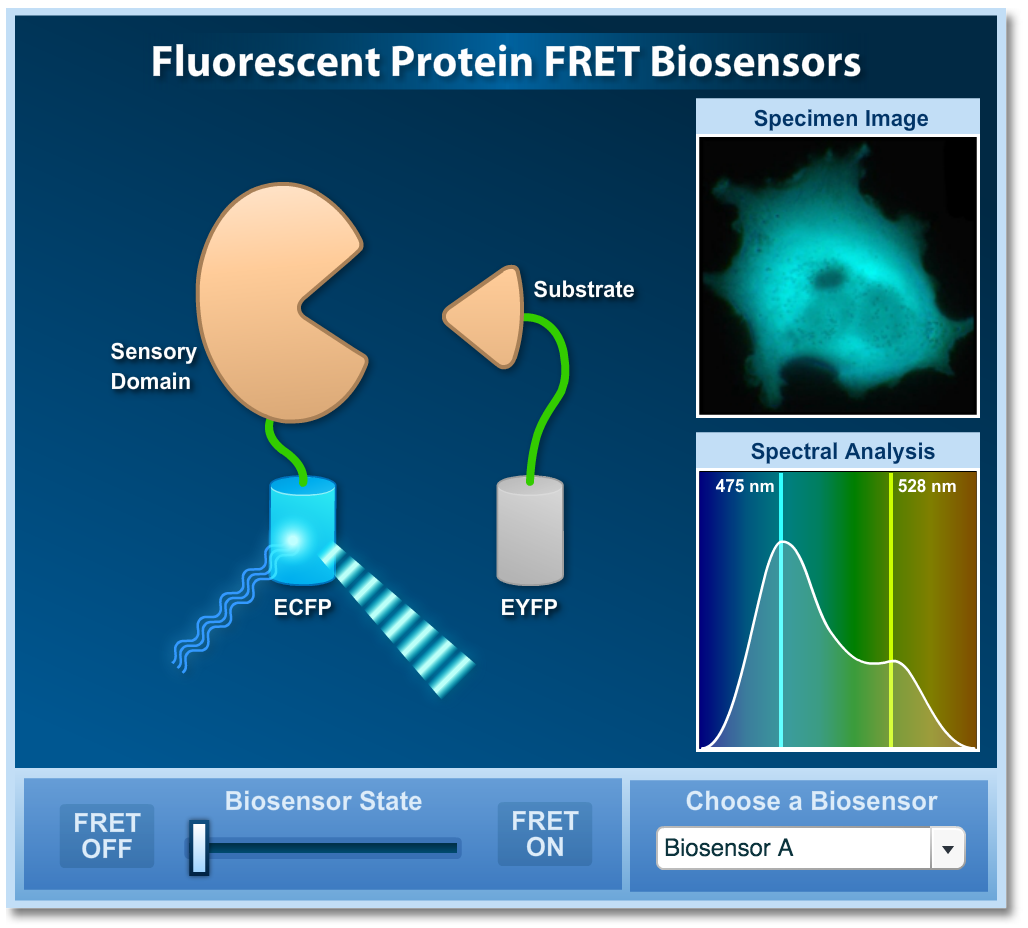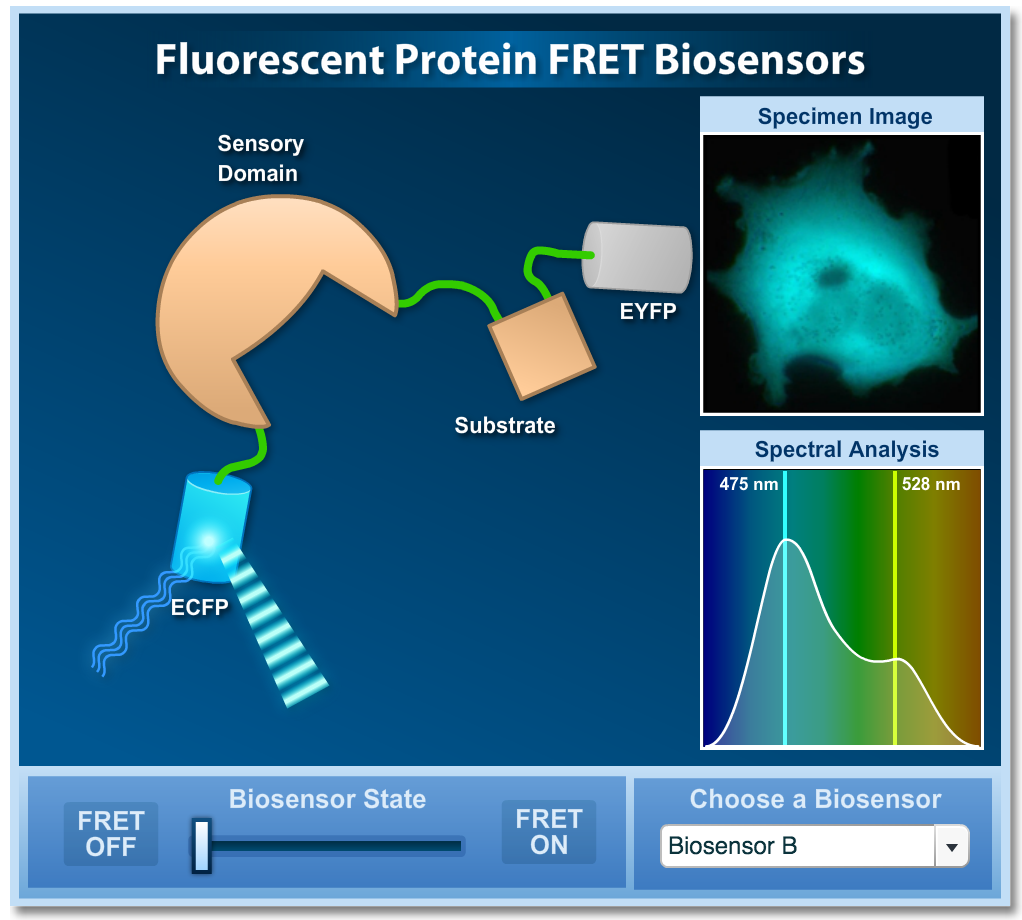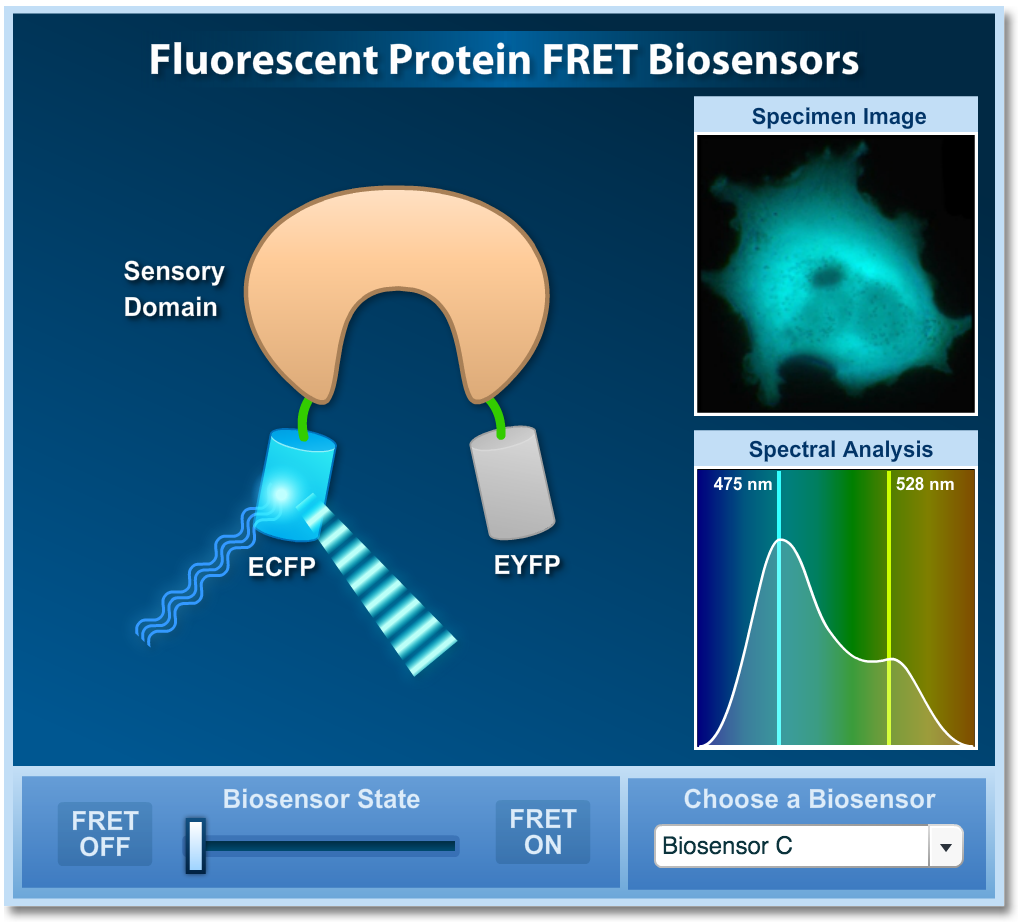FRAP: Fluorescence Rrecovery After Photobleaching
This 3D animation describe the Fluorescence Recovery After Photobleaching (FRAP) technology.
Transcription
Frappe fluorescence redistribution after photobleaching is used to gain quantitative information about the dynamic behaviour molecules in the cell.
In a FRAP experiment a high-intensity laser beam is used to irreversibly bleached fluorescent molecules
In one region of the cell redistribution other remaining fluorescent molecules is then monitored in both bleached and unbleached regions of interest over time by analyzing the time course for the redistribution we can determine the diffusion coefficient and mobile fraction other molecules
To simplify the photobleaching experiments and data analysis FRAP can be designed as a two-dimensional problem instead of a
three-dimensional problem
The FRAP experiment is commonly performed using a laser scanning confocal microscope to collect two dimensional data fluorescence is collected from the entire depth for the specimen at each XY position
To do this one selects a lands at sufficiently low numerical aperture but the laser beam approximates a column through the entire dept for the specimen the confocal pinhole is also opened wide enough that fluorescence from the entire day after the cell is collected at each pointSelect a regional interest for monitoring fluorescence for the low-intensity laser beam that includes the entire cell you need to collect a few images before bleaching to establish the initial distribution a fluorescence choose a second region of interest in the cell within which fluorescence will be bleached
Using a high-intensity laser beam began collecting images immediately after the bleach and collect enough points to get a good curve for the initial recovery
Collect for a long enough time that no additional changes in the fluorescence redistribution are observed to analyze the recovery curve the virtual cell can be used to simulate a FRAP experiment and obtain the diffusion coefficient and mobile fraction other fluorescent molecule
This video shows the protein movement on membrane by using the FRAP method. This is more information about Fluorescence recovery after photobleaching. FRAP was used to help define the fluid mosaic model of cell membranes. It can also be used to determine if a protein is able to move within a membrane (high percent recovery with a fast mobility), or whether it is tethered other structural components of the cell (low percent recovery with a slow mobility). All fluorescent dyes emit light of one wave length (e.g. green) after they have absorbed light of another wave length (e.g. blue). However, if a very high intensity blue light is delivered to the dye, the dye will photobleach meaning that the high intensity light has rendered the dye unable to fluoresce. This phenomenon has lead to an interesting method called Fluorescence Recovery After Photobleaching (FRAP). The idea behind this method is to use FRAP to measure the ability of a molecule to move around over time. To do this, a fluorophore must be covalently attached to your favorite molecule (i.e. protein, lipid, carbohydrate). Using a epifluorescence microscope, visualize the fluorescently tagged molecule using a low light intensity



